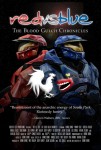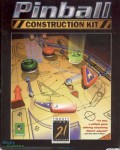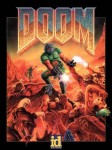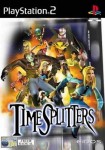Powet Alphabet: U is for User-Generated Content
by William Talley, filed in Games, Powet Alphabet on May.22, 2010
Since the alphabet is the building block of our language, the Powet Alphabet is the building block of what makes us geeks.
 It’s happened to all of us. You’re playing your favorite game, and you’ve thought of ways you could make it better. Maybe you were playing Marvel Ultimate Alliance and you were wondering what the game would be like if you could bring DC or Capcom characters to battle alongside the X-men and Avengers. Maybe you had an idea for a kick-ass new track for Forza or Gran Turismo. Maybe you wondered what would happen if you put Starcraft’s Zerg against Warcraft’s Scourge. Or maybe you wondered what your favorite WWII shooter would be like with Zombie Nazis (oh wait a sec, Treyarch already thought of that one). Ever since the beginnings of PC gaming, it’s been increasingly easier to turn games on their heads. Thanks to the success of games such as LittleBigPlanet, the console gaming market is able to get in too (well, without the need for warranty-voiding console hacking at least). These past several years have seen an increase in games which utilize user-created content, almost to the point where the entire game is driven by it.
It’s happened to all of us. You’re playing your favorite game, and you’ve thought of ways you could make it better. Maybe you were playing Marvel Ultimate Alliance and you were wondering what the game would be like if you could bring DC or Capcom characters to battle alongside the X-men and Avengers. Maybe you had an idea for a kick-ass new track for Forza or Gran Turismo. Maybe you wondered what would happen if you put Starcraft’s Zerg against Warcraft’s Scourge. Or maybe you wondered what your favorite WWII shooter would be like with Zombie Nazis (oh wait a sec, Treyarch already thought of that one). Ever since the beginnings of PC gaming, it’s been increasingly easier to turn games on their heads. Thanks to the success of games such as LittleBigPlanet, the console gaming market is able to get in too (well, without the need for warranty-voiding console hacking at least). These past several years have seen an increase in games which utilize user-created content, almost to the point where the entire game is driven by it.
 User-Generated content, as it pertains to gaming, can be divided into one of five categories, and they aren’t mutually exclusive either. First there are add-ons, which add new modules to a game. These can be anything from new weapons and characters to new maps and missions. Second, there are partial conversions, or overhauls. These change some of the basic rules of the gameplay, A good example of this is the Shockwave mod for Command and Conquer Generals: Zero Hour, which adds several new features, and Awesomemod for Sims 3, which alters the rules to add a number of gameplay features. Third, there are unofficial patches, which are made by a game’s fan community to fix issues that the developers can’t (or won’t) address. Vampire: The Masquerade – Bloodlines has been supported by several of these add-ons after its original developer closed up shop shortly after the game’s release. Next, there are total conversions, which use a base game as an engine on which to build an all-new game. This particular category of game modding was made famous by Counterstrike, which is a total conversion of Half-Life, and Team Fortress, which builds over Quake. In many cases, total conversion have become just as popular (if not more popular) than the game it was built upon. Finally, there is Machinima, which is more of an artistic vehicle wherein a game’s engine is used to produce computer animation, such as in the famous Red vs Blue, a comedy series which uses the Halo engine.
User-Generated content, as it pertains to gaming, can be divided into one of five categories, and they aren’t mutually exclusive either. First there are add-ons, which add new modules to a game. These can be anything from new weapons and characters to new maps and missions. Second, there are partial conversions, or overhauls. These change some of the basic rules of the gameplay, A good example of this is the Shockwave mod for Command and Conquer Generals: Zero Hour, which adds several new features, and Awesomemod for Sims 3, which alters the rules to add a number of gameplay features. Third, there are unofficial patches, which are made by a game’s fan community to fix issues that the developers can’t (or won’t) address. Vampire: The Masquerade – Bloodlines has been supported by several of these add-ons after its original developer closed up shop shortly after the game’s release. Next, there are total conversions, which use a base game as an engine on which to build an all-new game. This particular category of game modding was made famous by Counterstrike, which is a total conversion of Half-Life, and Team Fortress, which builds over Quake. In many cases, total conversion have become just as popular (if not more popular) than the game it was built upon. Finally, there is Machinima, which is more of an artistic vehicle wherein a game’s engine is used to produce computer animation, such as in the famous Red vs Blue, a comedy series which uses the Halo engine.
 The Modding scene has found the most success on the PC, and is popular with many Real Time Strategy Games, First Person Shooters, and Role-Playing Games, although it’s not limited to those genres. As a matter of fact, one of the first tools for generating user-creating content that was released was Electronic Art’s Pinball Construction set. PCS was developed by Bill Budge, who then allowed EA to publish it. People could create their own tables, set the positions of the flippers, spinners, and bumpers, adjust the ball physics, and create their own custom artwork. They could then freely and legally distribute them to friends via floppy disk (remember, this was years before the internet). It’s success led to the development of the Music Construction Set, Adventure Construction Set, and the Racing Destruction Set, all of which were developed by independent developers before being published by EA.
The Modding scene has found the most success on the PC, and is popular with many Real Time Strategy Games, First Person Shooters, and Role-Playing Games, although it’s not limited to those genres. As a matter of fact, one of the first tools for generating user-creating content that was released was Electronic Art’s Pinball Construction set. PCS was developed by Bill Budge, who then allowed EA to publish it. People could create their own tables, set the positions of the flippers, spinners, and bumpers, adjust the ball physics, and create their own custom artwork. They could then freely and legally distribute them to friends via floppy disk (remember, this was years before the internet). It’s success led to the development of the Music Construction Set, Adventure Construction Set, and the Racing Destruction Set, all of which were developed by independent developers before being published by EA.
 Overtime, more advanced tools hit the scene, and players found ways to alter their own games. One significant game led the breakthrough in computer modding: Doom. Doom’s level’s were stored as WAD files, and players were easily able to decipher this format, giving them the means to alter levels as well as create new ones. In time, developers created third party applications that made it easier for non-programmers to create Doom levels. Modders even went so far as the create total conversions based on various licensed properties. With the availability of 3d modeling tools such as Maya and Blender, creating objects for custom content has become easier than ever.
Overtime, more advanced tools hit the scene, and players found ways to alter their own games. One significant game led the breakthrough in computer modding: Doom. Doom’s level’s were stored as WAD files, and players were easily able to decipher this format, giving them the means to alter levels as well as create new ones. In time, developers created third party applications that made it easier for non-programmers to create Doom levels. Modders even went so far as the create total conversions based on various licensed properties. With the availability of 3d modeling tools such as Maya and Blender, creating objects for custom content has become easier than ever.
 How did gaming companies react? They simply embraced it. Realizing that the creation and distribution of user generated content for their software extended their products’ lifespans a thousandfold, they actively encouraged it. Throughout the next several years, developers would package tools to create mod content with their games, even going so far as to include the same tools that they use to create the game, such as Epic’s Unreal Editor which is used with most Unreal Engine based games and Valve’s Hammer Editor, which is used with the Source Engine. Some games have utilized programming languages to make them selves modable. Firaxis’s Civilization IV lets players change the rule sets and add modules using Python and XML. Some mods have even gained official status, such as Team Fortress, which gained a sequel which was included in the Orange Box. Firaxis has included several Fan-Made mods with the Civilization IV expansion ‘Beyond the Sword’, including ‘Rhye’s and Fall of Civilization’ and ‘Fall from Heaven’. Recently, many games themselves are driven by user-generated content. EA’s Spore allows players to share their creations via an in-game ‘Sporepedia’, and content is sometimes downloaded automatically into a player’s game world. The Sims 3 has several user-friendly tools players can use to create characters, styles for clothing, and houses. They can then be shared with other players at an online exchange. Lionhead’s The Movies allows players to create their own movies and share them online with friends via Youtube.
How did gaming companies react? They simply embraced it. Realizing that the creation and distribution of user generated content for their software extended their products’ lifespans a thousandfold, they actively encouraged it. Throughout the next several years, developers would package tools to create mod content with their games, even going so far as to include the same tools that they use to create the game, such as Epic’s Unreal Editor which is used with most Unreal Engine based games and Valve’s Hammer Editor, which is used with the Source Engine. Some games have utilized programming languages to make them selves modable. Firaxis’s Civilization IV lets players change the rule sets and add modules using Python and XML. Some mods have even gained official status, such as Team Fortress, which gained a sequel which was included in the Orange Box. Firaxis has included several Fan-Made mods with the Civilization IV expansion ‘Beyond the Sword’, including ‘Rhye’s and Fall of Civilization’ and ‘Fall from Heaven’. Recently, many games themselves are driven by user-generated content. EA’s Spore allows players to share their creations via an in-game ‘Sporepedia’, and content is sometimes downloaded automatically into a player’s game world. The Sims 3 has several user-friendly tools players can use to create characters, styles for clothing, and houses. They can then be shared with other players at an online exchange. Lionhead’s The Movies allows players to create their own movies and share them online with friends via Youtube.
 The modding scene hasn’t been prevalent on consoles due to their closed hardware. For the longest time there was no way of sharing or distributing custom content, and without a hard drive or suitable storage medium, console gamers didn’t have the flexibility that PC modders have enjoyed. Thankfully this is beginning to change with the advent of online gaming services. Eidos/Free Radical’s Timesplitters series included a mapmaker which allowed players to create their own multiplayer maps. Throughout the series, the mapmaker’s functionality has been increased, and players were able to create simgle player missions. By the franchise’s third installment, players were able to share their creations online. The recent Smackdown vs Raw 2010 gives players the ability to create wrestlers, storylines, finishing moves, and movies, and share them online. EA’s NCAA 2010 included an online-based Teambuilder application where players can create their own teams on their computer, then download them in to their game, making them available for other gamers.
The modding scene hasn’t been prevalent on consoles due to their closed hardware. For the longest time there was no way of sharing or distributing custom content, and without a hard drive or suitable storage medium, console gamers didn’t have the flexibility that PC modders have enjoyed. Thankfully this is beginning to change with the advent of online gaming services. Eidos/Free Radical’s Timesplitters series included a mapmaker which allowed players to create their own multiplayer maps. Throughout the series, the mapmaker’s functionality has been increased, and players were able to create simgle player missions. By the franchise’s third installment, players were able to share their creations online. The recent Smackdown vs Raw 2010 gives players the ability to create wrestlers, storylines, finishing moves, and movies, and share them online. EA’s NCAA 2010 included an online-based Teambuilder application where players can create their own teams on their computer, then download them in to their game, making them available for other gamers.
 Perhaps no other game demonstrates the potential for console-based content then Sony’s Little Big Planet. Using a set of easy-to-use tools, players can create their own levels, which can them be shared online. Ever since the game’s 2008 release, gamers have created over thousands of levels, many of which are homages to other classic game titles such as Mario and Contra. An upcoming sequel promises even more functionality.
Perhaps no other game demonstrates the potential for console-based content then Sony’s Little Big Planet. Using a set of easy-to-use tools, players can create their own levels, which can them be shared online. Ever since the game’s 2008 release, gamers have created over thousands of levels, many of which are homages to other classic game titles such as Mario and Contra. An upcoming sequel promises even more functionality.
 With the advent of Youtube, Myspace, blogging, Twitter, and other ‘Web 2.0’ mainstays, it’s been easier than ever for the regular consumer to influence the direction of media. Everyday people upload their own videos to Youtube, create playlists on last.fm, and share news tidbits on Twitter and Myspace. However, this really hasn’t been a new phenomenon. Gaming, be it PC or console has embraced this consumer-driven mentality for years, and it has led to some interesting results. Mod programmers have went on to form successful game development companies, and many mods have become legendary within gaming communities. So next time you check out someone’s Unreal map, LittleBigPlanet level, or Sims 3 lot, keep in mind that you could be looking at the next great game designer.
With the advent of Youtube, Myspace, blogging, Twitter, and other ‘Web 2.0’ mainstays, it’s been easier than ever for the regular consumer to influence the direction of media. Everyday people upload their own videos to Youtube, create playlists on last.fm, and share news tidbits on Twitter and Myspace. However, this really hasn’t been a new phenomenon. Gaming, be it PC or console has embraced this consumer-driven mentality for years, and it has led to some interesting results. Mod programmers have went on to form successful game development companies, and many mods have become legendary within gaming communities. So next time you check out someone’s Unreal map, LittleBigPlanet level, or Sims 3 lot, keep in mind that you could be looking at the next great game designer.


 PS3
PS3
 Famicom Dojo
Famicom Dojo KEEP PLAYING
KEEP PLAYING KEEP PLAYING: Rewind
KEEP PLAYING: Rewind Powet Toys
Powet Toys Powetcast
Powetcast Hitchhiker's Guide POWETcast
Hitchhiker's Guide POWETcast















Pingback: Public Relations and USG | Maggie Gray